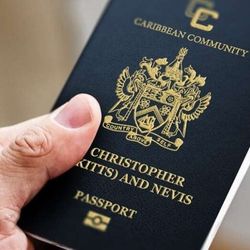Arm yourself with some insider intel, like when to book your flight and how to get creative low-cost airlines connections, and you can make almost any obscure destination a reality. We consulted industry experts for their tips on getting to and from out-there locations on a budget.
Creative Low-Cost Airlines Connections
There’s a trend where low-cost carriers offer better fares out of smaller, regional airports than large hubs. The more popular airlines dominate big airports because they can take over a terminal and service a massive amount of people daily. In this model, regional airlines find it harder to compete due to outsized brand recognition, so they turn to tiny, local airports.
“In the U.S., for example, you can save money on flying with Norwegian Airlines to Dublin out of [upstate New York’s] Stewart Airport, located an hour and a half by airport shuttle (from $20) from New York City, for a median airfare of about $385, versus flying out of John F. Kennedy Airport [on the same airline], which can cost upwards of $500,” says Steven Sintra, regional director of North America at Kayak.
Carriers like Frontier and Southwest are also known for servicing smaller airports to lure customers. You don’t have to stick with one airline for your entire booking, either. According to Sintra, “Oftentimes, booking two one-way tickets on different airlines can save you money versus booking a traditional round-trip ticket.”
For your international arrival, this argument is inverted. Because flying into a smaller airport is usually your only option, direct flights from international hubs are typically sky-high.
According to Jesse Neugarten, founder of budget flight-finding site Dollar Flight Club, “Ninety-five percent of the time, it’s going to be more expensive to fly directly into smaller airports than bigger ones,” he says. “It’s simple supply and demand.”
The solution? Fly into a major airport and book a separate connecting flight to a smaller one. He gives the example of the Galapagos Islands, off the coast of Ecuador.
“Roundtrip flights from U.S. hubs to the islands run roughly $1,500 on average,” he says. “[Instead], you can fly roundtrip into Quito for $300 to $500, then book another roundtrip to the Galapagos for around $200. Just by doing that, you’ve saved [as much as] $1,000.”
Time Your Booking
Although some of the old-school advice you’ve heard, like booking late at night or on Tuesdays, has largely been discredited, timing your booking correctly is still crucial to ensuring you get the best price.
First off, start your search two to three months in advance for domestic flights and three to five for international flights, suggests Neugarten. When you see a great fare that far out, his advice is to jump on it—it won’t last long, and you’re unlikely to find a cheaper price by waiting.
He also notes that if you can be flexible, Tuesday, Wednesday, and Saturday are the cheapest days to fly. Most booking sites, include Google Flights, have a calendar view option that allows you to compare ticket prices across days and months to quickly find the cheapest travel dates.
Time of year can also make a difference. “We typically see a decrease in median airfare for those searching for travel in January, as opposed to April or May,” Sintra says. “This is likely because they’re traveling in March or April—two of the cheapest travel months of the year.” The two most expensive months are easy to guess: July and August, where most destinations enjoy warmer and drier climes.
Save on Rental Cars
If you can’t fly into a small local airport, your other option is to fly into a large airport and make up that distance by renting a car. Between credit cards and discount memberships, there are plenty of ways to knock some cash off of your rental.
AAA Travel or Costco Travel offer some of the best discounts around. With a Costco membership ($60 a year), you get a 30-percent discount on major car rental brands such as Budget, Enterprise, and Hertz, as well as the ability to add a second driver free of charge.
Car sharing companies like Turo, which services cities across the U.S., Canada, Germany, and the U.K., have made car rental more accessible in destinations that typically didn’t have a market for it.
You can book a variety of cars and SUVs online and many car owners will even provide delivery to the airport or a convenient location. For more out-of-the-way destinations, oftentimes, your best cost-saving bet is going through local companies, like Sixt in Iceland and Jucy in New Zealand.
Make the Most of Your Layover
Traveling to distant spots—and taking advantage of those handy connections—usually means a long layover. Sintra encourages travelers to not just endure a layover, but to enjoy it.
“Several airlines such as Icelandic Air, Finnair, Air Canada, and TAP offer stopover programs so strategic travelers can get two vacations for the price of one,” he says. Kayak’s recent Travel Awards Guide offers a list of top stopover destinations, including Reykjavík, Helsinki, and Panama City.
Some of those airlines, like TAP (which makes pit stops in Lisbon and Porto, Portugal), even offer upgrades that let you explore the city for five days with discounts on hotels and restaurants.
If leaving the airport isn’t an option, you can still get a much-needed reprieve without stepping out of the double doors. Frequent travelers should get a credit card, such as Chase Sapphire Reserve, that includes Priority Pass lounge access.
Or check out LoungeBuddy, a lounge-crashing app that often allows you to purchase access for rates that compete with a typical airport meal. At other airports, you can partake in luxuries without a pass at all: Munich, Dubai, and London Heathrow are among the airports that have nap pods, beer gardens, yoga rooms, and pet parks.

